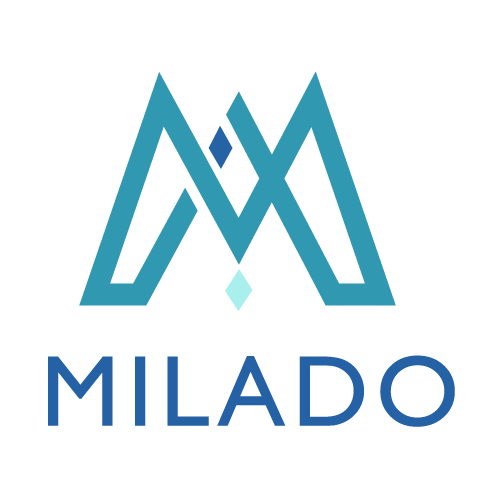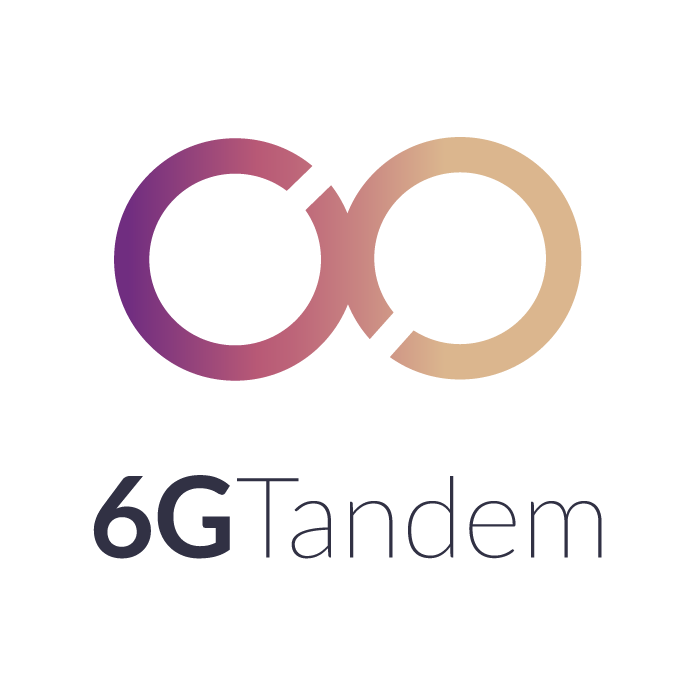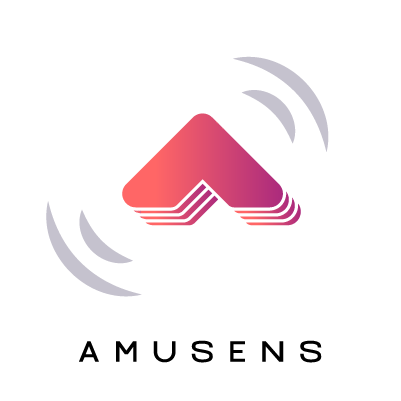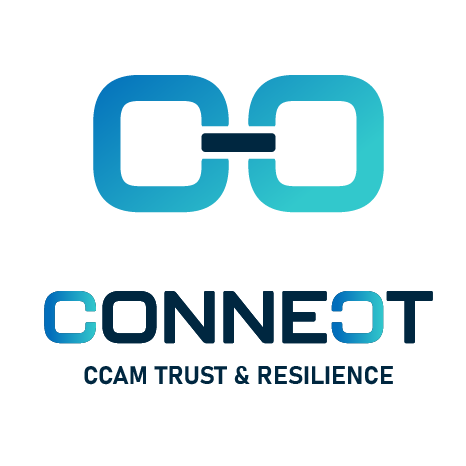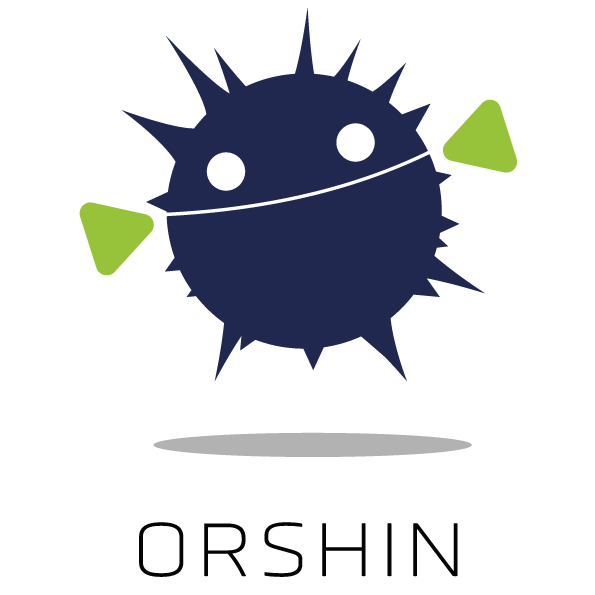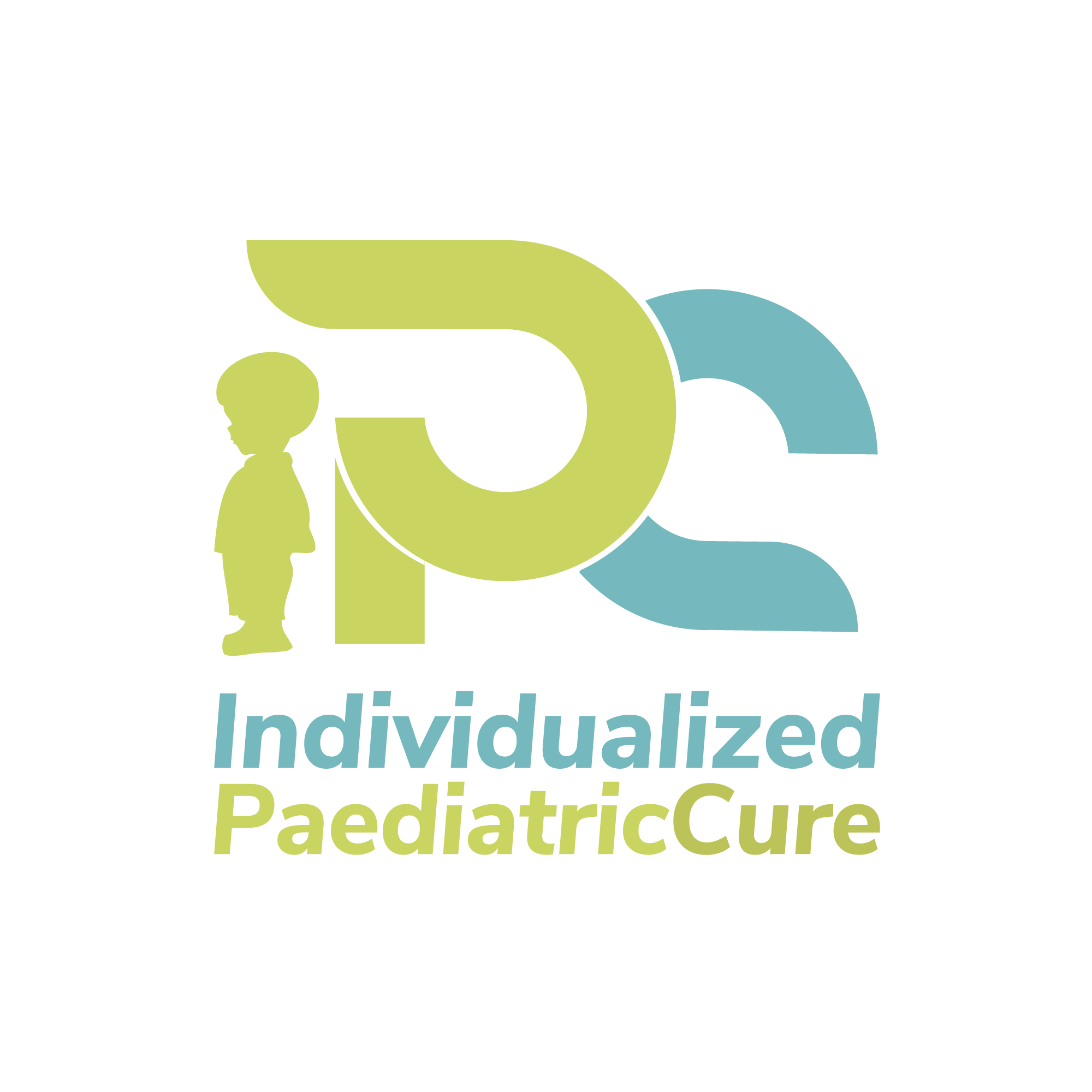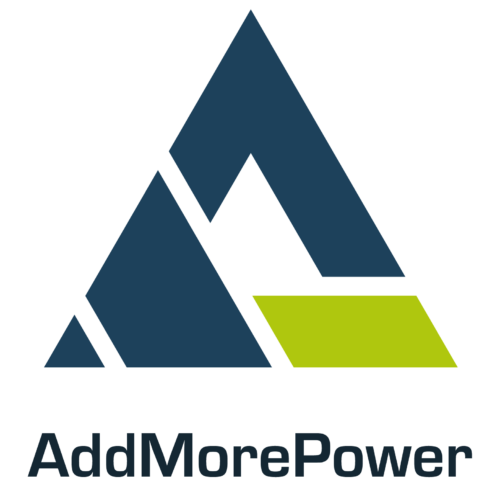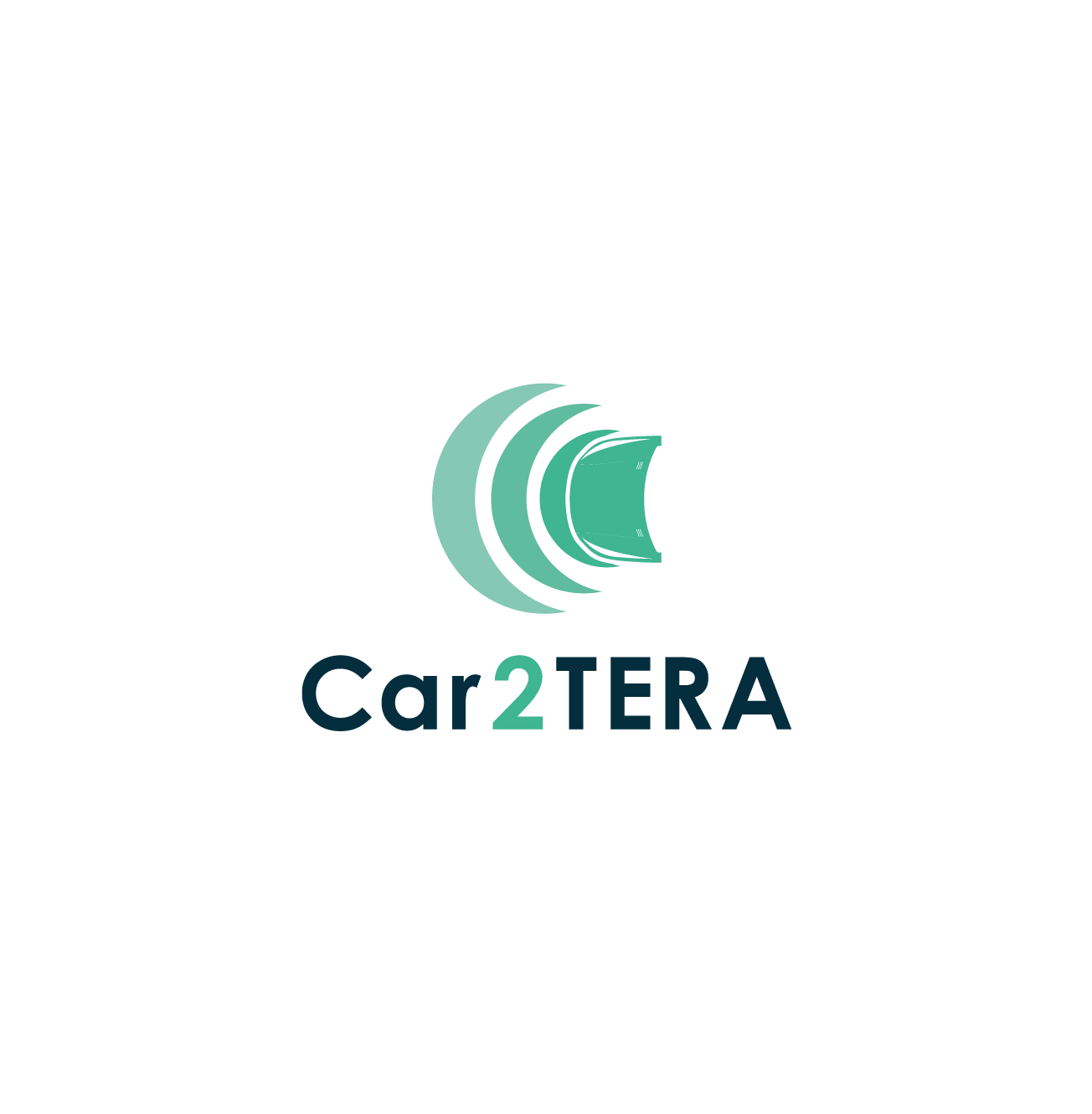Results & Downloads
Scientific publication
The paper “MmWave for Extended Reality: Open User Mobility Dataset, Characterisation, and Impact on Link Quality” was published in IEEE Communications Magazine. The authors are Alexander Marinsek, Sam De Kunst, Gilles Callebaut, Lieven De Strycker, Liesbet Van der Perre.
Scientific publication
DYNAMO 5th Factsheet: Crisis Communication & Enhancement of Organisational Resilience
The fifth issue of the DYNAMO Factsheet series is now available. Download it to get an overview of the role of crisis communication and the enhancement of organisational resilience.
DYNAMO 5th Factsheet: Crisis Communication & Enhancement of Organisational Resilience
Paper published: Proceedings of the 23rd European Conference on Cyber Warfare and SecurityPaper (ECCWS)
Paper entitled: “CTI Sharing Practices and MISP Adoption in Finland’s Critical Infrastructure Protection”
Paper published: Proceedings of the 23rd European Conference on Cyber Warfare and SecurityPaper (ECCWS)
Paper published: Proceedings of the 23rd European Conference on Cyber Warfare and SecurityPaper (ECCWS)
Paper entitled: “Measuring Societal Impacts of Cybersecurity”
Paper published: Proceedings of the 23rd European Conference on Cyber Warfare and SecurityPaper (ECCWS)
Paper published: Proceedings of the 23rd European Conference on Cyber Warfare and SecurityPaper (ECCWS)
Paper entitled: “E-EWS-based Governance Framework for Sharing Cyber Threat Intelligence in the Energy Sector”
Paper published: Proceedings of the 23rd European Conference on Cyber Warfare and SecurityPaper (ECCWS)
Paper published: Proceedings of the 23rd European Conference on Cyber Warfare and SecurityPaper (ECCWS)
Paper entitled: “The Social Domain: Resilience of Information-Sharing Networks”
Paper published: Proceedings of the 23rd European Conference on Cyber Warfare and SecurityPaper (ECCWS)
Paper published: Proceedings of the 23rd European Conference on Cyber Warfare and SecurityPaper (ECCWS)
Paper entitled: “Business Model Canvas and Competition to Understand Exploitation of Cybersecurity Project Results”
Paper published: Proceedings of the 23rd European Conference on Cyber Warfare and SecurityPaper (ECCWS)
Scientific publication
The paper “Channel Performance Metrics and Evaluation for XR Head-Mounted Displays with mmWave Arrays” was published in IEEE Transactions on Communications. The authors are Alexander Marinsek, Xuesong Ca, Lieven De Strycker, Fredrik Tufvesson and Liesbet Van der Perre.
Scientific publication
Scientific Publication
The paper Unveiling the Vulnerability of Oxide-Breakdown-Based PUF was published at IEEE Electron Device Letters. The authors are Pablo Saraza-Canflanca, Ferenc Fodor, Javier Diaz Fortuny, Benedikt Gierlichs, Robin Degraeve Ben Kaczer and Ingrid Verbauwhede.
Scientific Publication
D6.1 “Plan for dissemination and exploitation incl. communication activities”
This deliverable provides an initial plan for dissemination and exploitation incl. communication activities and training and will be periodically updated based on the project’s progress. It also constitutes an initial dissemination & communication kit for 6GTandem, as well as the launch of the project website and communication infrastructure in M03.
D6.1 “Plan for dissemination and exploitation incl. communication activities”
D1.1 “Project quality plan”
This project quality plan constitutes a set of project templates and explains the project management, review and internal quality control process, as well as other organizational topics such as meeting organization. It further includes the open science practices within the 6GTandem project. This handbook shall support all partners in their daily work.
D1.1 “Project quality plan”
DYNAMO Data Protection Notice
This is to inform the data subjects that may have been affected by the crawling operations about the processing carried out as part of the project and enable them to exercise their data protection rights. The responsible partner (controller) is CERTH.
DYNAMO Data Protection Notice
Paper published: Proceedings of The 19th International Conference on Cyber Warfare and Security (ICCWS)
Paper entitled: “Utilization and Sharing of Cyber Threat Intelligence Produced by Open-Source Intelligence”
Paper published: Proceedings of The 19th International Conference on Cyber Warfare and Security (ICCWS)
Paper published: Proceedings of The 19th International Conference on Cyber Warfare and Security (ICCWS)
Paper entitled: “Utilization and Sharing of Cyber Threat Intelligence Produced by Open-Source Intelligence”
Paper published: Proceedings of The 19th International Conference on Cyber Warfare and Security (ICCWS)
Paper Published: Proceedings of The 19th International Conference on Cyber Warfare and Security (ICCWS)
Paper entitled: “Implementation of OSINT for Improving an International Finance Sector Organization’s Cybersecurity”
Paper Published: Proceedings of The 19th International Conference on Cyber Warfare and Security (ICCWS)
Scientific Publication
The paper Architectural Mimicry: Innovative Instructions to Efficiently Address Control-Flow Leakage in Data-Oblivious Programs was published at IEEE Symposium on Security & Privacy 2024.The authors are Hans Winderix, Márton Bognár, Job Noorman, Lesly-Ann Daniel and Frank Piessens.
Scientific Publication
D5.2 “Distributed Processing, Fast Offloading and MEC-enabled Orchestrator”
D5.2 follows up the D5.1 contributions to deliver the first version of the CONNECT orchestrator and the mechanisms for secure data exchange. The here-in reported work cov- ers the task-offloading logic and the implementation details of the CONNECT orchestartor software. Lastly, the work is completed with the Blockchain architecture and data handling principles to facilitate the CONNECT accountable attestation and monitoring (when combined with the D5.1 claims).
D5.2 “Distributed Processing, Fast Offloading and MEC-enabled Orchestrator”
D4.2 “Virtualization- and Edge-based Security and Trust Extensions”
Deliverable D4.2 documents the high-level design of the complete CON- NECT security architecture as developed by Workpackage WP4. Com- pared to D4.1 we refine and add users stories and designs for the Multi- Access Edge Cloud (MEC). We also add detailed cryptographic protocols that implement the trust assessment of the services of CONNECT. Fi- nally, we detail the concepts and interactions for secure migration and up- grade of TEE-protected workloads. This is the technical foundation for Se- cure Task Offloading. The key questions that this deliverable answers are “How can the Multi-access Edge Cloud (MEC) be architected to provide robust security and privacy guarantees?”, “How can cryptography help to remotely assess trust of services while maintaining sound privacy guar- antees?”, and “How can vehicle and edge collaborate while maintaining security?”
D4.2 “Virtualization- and Edge-based Security and Trust Extensions”
D3.2 “CONNECT Trust & Risk Assessment and CAD Twinning Framework (Initial Version)”
This deliverable builds upon D3.1 and describes major build- ing blocks for the standalone trust assessment framework (TAF), the federated TAF and the digital twin version TAF-DT. For the standalone TAF, a fine-grained architecture underlying our current prototype is provided, federated TAF and TAF-DT are described as high-level architectures.
D3.2 “CONNECT Trust & Risk Assessment and CAD Twinning Framework (Initial Version)”
D7.2 “Dissemination, Communication, Clustering and Exploitation activities”
This deliverable presents the CONNECT dissemination, communication, clustering, standardization, and exploitation activities up to M18. Furthermore, it contains information highlighting open-source contributions and workshop organization activities.
D7.2 “Dissemination, Communication, Clustering and Exploitation activities”
Publication in the Journal “Nature Communications”
Article entitled: “Rare disease research workflow using multilayer networks elucidates the molecular determinants of severity in Congenital Myasthenic Syndromes”
Publication in the Journal “Nature Communications”
Scientific Publication
Distributed MIMO Measurements for Integrated Communication and Sensing in an Industrial Environment – academic article by by Christian Nelson, Xuhong Li, Aleksei Fedorov, Benjamin Deutschmann and Fredrik Tufvesson
Scientific Publication
DYNAMO 3rd Factsheet: Resilience
The third issue of the DYNAMO Factsheet series is now available. Download it to get an overview of the 4Rs of Resilience of DYNAMO, the Resilience Cycle and the Resilience Assessment Methodology.
DYNAMO 3rd Factsheet: Resilience
D4.1 “Conceptual Architecture of Customizable TEE and Attestation Models Specifications”
Deliverable D4.1 documents the initial results of Workpackage 4. It speci- fies the core security architecture of CONNECT revolving around the use of HW-based trust anchors for supporting both the continuous trust as- sessment of the CCAM-wide continuum as well as the secure lifecylce management of all comprised devices. D4.1 refines the architecture (com- ponents and flows) presented in D2.1 and puts forth a deteiled description of all interactions and sequence of actions with the underlying Trusted Computing Base for providing node- and data-centric trustworthiness ev- idence. Furthermore, it documents user stories that specify desired fea- tures, and finally outlines the key hierarchy and formalized requirements. This overarching TEE architecture will guide the design of all security pro- tocols and cryptographic mechanisms to be documented in D4.2.
D4.1 “Conceptual Architecture of Customizable TEE and Attestation Models Specifications”
Scientific publication
The paper “Impact of array configuration on head-mounted display performance at mmWave bands” is now available for open access on ArXiv. The authors are Alexander Marinsek, Xuesong Cai, Lieven De Strycker, Fredrik Tufvesson and Liesbet Van der Perre.
Scientific publication
Scientific Publication
An Open Dataset Storage Standard for 6G Testbeds has been published by Gilles Callebaut, Michiel Sandra, Christian Nelson, Thomas Wilding, Daan Delabie, Benjamin J. B. Deutschmann, William Tärneberg, Emma Fitzgerald, Liesbet Van der Perre from the 6GTandem consortium. The paper was successfully presented at IEEE CAMA 2023.
Scientific Publication
D5.1 “Distributed Processing and CCAM Trust Functions Offloading & Data Space Modelling”
D5.1 paves the way to the CONNECT orchestration im- plementation by first defining the task migration/offloading problem and then presenting a comprehensive analysis of the state-of-the-art. Derived insights suggest candidate ap- proaches for the CONNECT implementation. Furthermore, the document explores identity management and proposes verifiable and presentation claims to verify a CONNECT en- tity’s attributes or identity. The involved data model to hold the needed information is finally introduced.
D5.1 “Distributed Processing and CCAM Trust Functions Offloading & Data Space Modelling”
Scientific Publication
The paper 6G Radio Testbeds: Requirements, Trends, and Approaches, has been accepted for publication in the IEEE Microwave Magazine’s Wireless Communications Focus Issue by the MTT-S TC-23. The authors are Gilles Callebaut, Liang Liu, Thomas Eriksson, Liesbet Van der Perre, Ove Edfors and Christian Fager.
Scientific Publication
D7.3 “Updated plan and initial report on dissemination and communication activities”
This deliverable includes information on the dissemination, communication and exploitation activities, as well as on internal and external training activities of the EXFILES project. It is the first report on the communication and dissemination activities of the first 18 project months. It thus contains relevant information about all executed activities up to M18, as well as an updated plan of future activities. The deliverable will be updated and finalized within “D7.6 Final report on dissemination & communication activities” at the project end.
D7.3 “Updated plan and initial report on dissemination and communication activities”
D7.2 “Hands-on trainings for contributors”
This document describes deliverable D7.2 “Hands-on training for contributors”. As part of this deliverable, RISCURE has made available (and will continue to enable access for the entire duration of the project) two standard, hands-on online training courses to all EXFILES contributors.
D7.2 “Hands-on trainings for contributors”
D2.1 “Operational Landscape, Requirements and Reference Architecture – Initial Version”
Deliverable D2.1 defines the technical requirements of CONNECT, alongside the specification of the conceptual reference architecture, the functional components, and interfaces between them. It also provides an analysis and point of reference for CONNECT in relation to the use cases and reference scenarios including an analysis of the trust models, that need to be considered for capturing the security and privacy requirements of each of the target CCAM services, and the trusted computing anchors to be further investigated and deployed as part of all actors – both at the MEC and Edge. Its purpose is to define the parameters for the rest of the CONNECT project and provide the necessary input for the design and implementation of all security enablers and models towards the dynamic trust assessment of complex CCAM ecosystems.
D2.1 “Operational Landscape, Requirements and Reference Architecture – Initial Version”
D1.2 “Project Quality Plan”
This Project Quality Plan constitutes a set of project templates and explanations on the project management process, review process, quality checks and meeting organisation, which are communicated to all partners. It further includes the risk assessment plan and shows how potential risks are assessed and mitigated.
D1.2 “Project Quality Plan”
D3.1 “Architectural Specification of CONNECT Trust Assessment Framework, Operation and Interaction”
Deliverable 3.1 presents initial work towards the Trust Asssessment Framework (TAF). It includes definition of core terminology for trust assessment, a state of the art analysis and requirements engineering which motivates our decision for a TAF based on Subjective Logic. Subsequently, an ap-proach to trust modeling is described including a methodol- ogy for deriving trust relationships and examples for such trust relationships and trust sources are given based on the four CONNECT use case. Finally, a high-level architecture of the TAF is presented and first considerations for the evaluation of the TAF are described.
D3.1 “Architectural Specification of CONNECT Trust Assessment Framework, Operation and Interaction”
Paper published in IEEE Internet of Things Magazine
The Internet of Vehicles (IoV) — Security, Privacy, Trust, and Reputation Management for Connected Vehicles
Authors: A. Drobot, T. Zhang, M. L. Buonarosa, F. Kargl, S. Schwinke and B. Sikdar
Paper published in IEEE Internet of Things Magazine
Scientific Publication
The paper MicroProfiler: Principled Side-Channel Mitigation through Microarchitectural Profiling was published at Euro SP23 on July 3-7 2023. The authors are Marton Bognar, Hans Winderix, Jo Van Bulck, Frank Piessens
Scientific Publication
Paper published in IEEE VTC Spring 2023
Securing Cooperative Intersection Management through Subjective Trust Networks
Authors: Frank Kargl, Nataša Trkulja, Artur Hermann, Florian Sommer, Anderson Ramon Ferraz de Lucena, Alexander Kiening, Sergej Japs
Paper published in IEEE VTC Spring 2023
Poster on FEM Simulations to optimize a micro mirror array package for a wide operating temperature range
Partner Fraunhofer presented a poster at SPIE Photonics West 2023.
Poster on FEM Simulations to optimize a micro mirror array package for a wide operating temperature range
Scientific Publication
The paper E-Spoofer: Attacking and Defending Xiaomi Electric Scooter Ecosystem was published at WiSec’23 on 31st May 2023. The authors are Marco Casagrande, Riccardo Cestaro, Eleonora Losiouk, Mauro Conti and Daniele Antonioli.
Scientific Publication
Scientific Publication
The paper PROSPECT: Provably Secure Speculation for the Constant-Time Policy was published at USENIX Security’23 on 1st February 2023. The authors are Lesly-Ann Daniel, Marton Bognar, Job Noorman, Sébastien Bardin, Tamara Rezk and Frank Piessens.
Scientific Publication
Scientific Publication
The paper Lightweight Countermeasures Against Original Linear Code Extraction Attacks on a RISC-V Core was published at HOST on 1st-3rd May 2023. The authors are Théophile Gousselot, Olivier Thomas, Jean-Max Dutertre, Olivier Potin and Jean-Baptiste Rigaud.
Scientific Publication
Scientific Publication
The paper Low-Cost First-Order Secure Boolean Masking in Glitchy Hardware was published at the DATE 2023 on 19th April 2023. The authors are Dilip Kumar S V, Josep Balasch, Benedikt Gierlichs and Ingrid Verbauwhede.
Scientific Publication
Scientific Publication
The paper Efficient attack-surface exploration for electromagnetic fault injection was published at the COSADE 2023 on 4th April 2023. The authors are Daniele Antonio Carta, Vittorio Zaccaria, Gabriele Quagliarella and Maria Chiara Molteni.
Scientific Publication
FEM Simulations to optimize a micro mirror array package for a wide operating temperature range
This paper was published at the SPIE Photonics West 2023 on 15th March 2023.
FEM Simulations to optimize a micro mirror array package for a wide operating temperature range
D7.1 “Plan for Dissemination and Exploitation incl. Communication”
This deliverable presents the CONNECT communication kit including the project’s visual identity as well as communication and dissemination material to be used within the project. Furthermore, a detailed standardization plan is documented constituting a guideline for the liaison and further dissemination of the CONNECT project to external target groups and related standardization working groups. A timeline of short- and long-term dissemination activities is presented.
D7.1 “Plan for Dissemination and Exploitation incl. Communication”
Paper published in the 26th International Conference on Artificial Intelligence and Statistics (AISTATS)
Paper entitled “Isotropic Gaussian Processes on Finite Spaces of Graphs”
Paper published in the 26th International Conference on Artificial Intelligence and Statistics (AISTATS)
6GTandem Announcement Letter
The Horizon Europe project “6GTandem” will co-design novel dual-frequency operation at sub-10 GHz and sub-THz frequencies and a new highly integrated and distributed radio transceiver architecture to deliver high-performance energy efficient services for future 6G applications.
6GTandem Announcement Letter
Paper published in Transactions on Intelligent Vehicles
An ML-Aided Reinforcement Learning Approach for Challenging Vehicle Maneuvers
Authors: Dinesh Cyril Selvaraj, Shailesh Hegde, Nicola Amati, Francesco Deflorio and Carla Fabiana Chiasserini
Paper published in Transactions on Intelligent Vehicles
DYNAMO Announcement Letter
We are happy to announce that under the technical leadership of CERTH in Greece, the coordination of Frauenhofer EMI in Germany with the support of the Austrian based private research company Technikon, the scientists of the consortium are engaged in a EC funded research project entitled “Dynamic Resilience Assessment Method including combined Business Continuity Management and Cyber Threat Intelligence solution for Critical Sectors” or DYNAMO. In this three-year project, 15 partners from ten different countries will work to address the problem of cyber threats in critical sectors such as health, energy and transportation.
DYNAMO Announcement Letter
Factsheet 4 – Main Achievements & ongoing work
The fourth iPC factsheet about the main achievements and ongoing work is now available. Much has already been done in the first two project periods to achieve the goal to improve the care of children with cancer and our partners are continuously working in the third project period to solve the mathematical and computational bottlenecks of data- and model-based medicine. Therefore, the fourth iPC factsheet describes the most important achievements so far and the ongoing work in the current project period.
Factsheet 4 – Main Achievements & ongoing work
D7.3 Identification of cell subpopulations in each tumour type, their association with response to therapy, and prediction of effective alternative therapies
Tumour decomposition into cells and subtypes and inference about the effects of treatments and perturbations on each tumour component (cell or tumor subclone).
D7.3 Identification of cell subpopulations in each tumour type, their association with response to therapy, and prediction of effective alternative therapies
Factsheet 3 – iPC Open Source Software
The third iPC factsheet about the iPC Open source software is now available.
It describes 3 of the 25 open source softwares that were developed during the project framework.
The focus will be on INtERAcT, CONSIFER and DECODE, which were developed by our partner IBM.
Factsheet 3 – iPC Open Source Software
Presentation on Advantages of Phase Modulating MEMS for Full 3D Hologram Scene Reconstruction
Partner SeeReal gave a presentation at Digital Holography and Three-Dimensional Imaging 2022.
Presentation on Advantages of Phase Modulating MEMS for Full 3D Hologram Scene Reconstruction
Factsheet 2 – iPC Platforms
The second iPC factsheet about the iPC Platforms is now available. It describes the 5 cloud-based platforms that were developed during the project framework from our partners BSC, XLAB, CHOP, AMC, PMC, DKFZ, UGent and BCM.
Factsheet 2 – iPC Platforms
D1.4 Model development data including genetic perturbation screens and gene-drug synergies
This deliverable reports on the generation of CROPseq and drug screening data for two Ewing Sarcoma cell lines, one Hepatoblastoma cell line and one B-cell Acute Lymphoblastic Leukemia cell line.
D1.4 Model development data including genetic perturbation screens and gene-drug synergies
Conference Paper “ECML PKDD International Workshop on eXplainable Knowledge Discovery in Data Mining”
Paper entitled: “Is Attention Interpretation? A Quantitative Assessment On Sets”
Conference Paper “ECML PKDD International Workshop on eXplainable Knowledge Discovery in Data Mining”
Factsheet 1 – Tumour Type Working Groups
The first iPC factsheet on Tumour Type Working Groups is now available. It describes the 5 different types of childhood cancer and the work our partners are doing.
The working groups are led by our partners IGTP, DKFZ, PMC, CURIE, UZH and MPG.
Factsheet 1 – Tumour Type Working Groups
D7.2 Software to define tumour subclones and association with therapy response
Flow cytometry is an important diagnostic tool in childhood acute lymphoblastic leukaemia (ALL), flow cytometry data analysis is limited by multiple sources of bias and variation. We present a unified machine learning framework for automated analysis of a standardized diagnostic paediatric leukaemia staining that can overcome these challenges. We applied our framework in a large cohort of ALL flow cytometry samples and demonstrated how it can robustly extract the frequencies of cell lineage populations with minimal expert intervention. This work provides a proof of concept that our method meets the needs of an automated analysis tool for diagnostic flow cytometry data.
D7.2 Software to define tumour subclones and association with therapy response
D8.3 Metabolic models
Oncogene-driven metabolic rewiring in cancer is key to allow proliferation of tumour cells in low nutrient and oxygen conditions. To study such phenomena, reconstructing context-specific metabolic models through omics data integration is crucial. Here we report the original pipeline to construct context-specific metabolic models from scRNA-seq data and we applied it to scRNA-seq data from Ewing Sarcoma.
D8.3 Metabolic models
D4.3 Topological analysis of multi-omics and multi-cancer molecular networks resulting in the definition of molecular mechanisms
Three types of network-based analysis of gene-gene interaction networks have been suggested and tested on the multi-omics paediatric cancer datasets. User-friendly computational environment for joint application of matrix factorization and network analysis has been implemented.
D4.3 Topological analysis of multi-omics and multi-cancer molecular networks resulting in the definition of molecular mechanisms
D8.2 Network models for molecular target identification
We focused on the development of patient specific signalling networks using prior knowledge about the molecular events and CRISPR perturbation datasets and associated the activity of the nodes of signalling network with drug response data to find molecular targets.
D8.2 Network models for molecular target identification
D4.4 Consensus multi-omics subtypes of paediatric cancers
We report on the implementation of a method for multilayer community trajectory analysis and its applications, including a published study on medulloblastoma, a study on congenital myasthenic syndromes, and a study on the functional characterization of commonalities among a selection of paediatric tumours.
D4.4 Consensus multi-omics subtypes of paediatric cancers
Consensus multi-omics subtypes of paediatric cancers
We report on the implementation of a method for multilayer community trajectory analysis and its applications, including a published study on medulloblastoma, a study on congenital myasthenic syndromes, and a study on the functional characterization of commonalities among a selection of paediatric tumours.
Consensus multi-omics subtypes of paediatric cancers
D2.4 DAC Portal prototype, validated analytical workflows, analysis prototype, updated metadata standards and portal prototype
We report on the selection of the appropriate data models to handle the available data and metadata to the iPC Central Computational and Data platform. We also report on the current status of the development for the iPC Data portal.
D2.4 DAC Portal prototype, validated analytical workflows, analysis prototype, updated metadata standards and portal prototype
D3.3 Integration of INtERAcT, MelanomaMine and LimTox and application to biomedical publications on paediatric cancers
This deliverable reports on the integration of INtERAcT and the implemented text mining workflow. The workflow was developed to adapt LimTox and MelanomaMine to pediatric tumor abstracts from PubMed and relies on INtERAcT in its downstream component of inferring molecular associations between entities extracted from unstructured text.
D3.3 Integration of INtERAcT, MelanomaMine and LimTox and application to biomedical publications on paediatric cancers
D1.3 Synthetic data for testing and training patient, cancer, and drug models
Synthetic data generation is emerging as an important solution for precision medicine. Therefore, an explainable Variational AutoEncoder (VAE) model is developed for synthetic transcriptomics data generation in medulloblastoma. The model can be used to complement and interpolate available data with synthetic instances. It is also transparent as it is able to match the learned latent variables with unique gene expression patterns. The model can also be adapted to other pediatric cancers and the resulting synthetic datasets used to test and train patient, cancer, and drug models in other work packages of the iPC project.
D1.3 Synthetic data for testing and training patient, cancer, and drug models
Paper published in the Special Issue Hepatoblastoma and Other Pediatric Liver Tumors
Paper entitled “Bridging molecular basis, prognosis, and treatment of pediatric liver tumors”.
Paper published in the Special Issue Hepatoblastoma and Other Pediatric Liver Tumors
Paper published in the Journal for ImmunoTherapy of Cancer
Paper entitled “Identification and validation of viral antigens sharing sequence and structural homology with tumor-associated antigens (TAAs).”
Paper published in the Journal for ImmunoTherapy of Cancer
Paper presented in the “Computer Vision for Microscopy Image Analysis (CVMI)” workshop
Paper entitled “Unsupervised Detection of Cancerous Regions in Histology Imagery using Image-to-Image Translation”
Paper presented in the “Computer Vision for Microscopy Image Analysis (CVMI)” workshop
Paper published in Physics of Life Reviews: pp. 132-134
Paper entiteld: „Adaptation through the lense of single-cell multi-omics data Comment on “Dynamic and thermodynamic models of adaptation” by A.N. Gorban et al.”
Paper published in Physics of Life Reviews: pp. 132-134
Paper published in the Proceedings of International Conference on Machine Learning (ICML) 2021
A new network inference algorithm from TUDA with iPC acknowledge was published in the ICML 2021. Paper entitled “Active Learning of Continuous-Time Bayesian Networks Through Interventions”.
Paper published in the Proceedings of International Conference on Machine Learning (ICML) 2021
D4.2 An interactive online atlas of interconnected network maps based on the NaviCell platform
With the development of the NaviCell 3.0 web server, there is a complete and automated web-based infrastructure for hosting molecular maps, patient similarity network maps, and multi-omics datasets for the project. The NaviCell platform supports molecular map navigation and exploration using the Google maps engine. The logic of navigation is taken from Google maps. This NaviCell 3.0 web-server is freely available and several step-by-step tutorials are accessible.
engine. The logic of navigation is taken from Google maps. This NaviCell 3.0 web-server is freely available and several step-by-step tutorials are accessible.
D4.2 An interactive online atlas of interconnected network maps based on the NaviCell platform
D7.1 Application of software enabling computational deconvolution of bulk RNA-sequencing data to immune cell profiles of patient samples
Computational deconvolution of bulk RNA-sequencing data to infer cell type composition of a sample is challenging. Benchmarking of various computational deconvolution tools revealed various data processing parameters that impact deconvolution accuracy and revealed the importance of a complete reference matrix. As a complete reference matrix is often not available, an algorithm was designed that can handle missing cell types. This algorithm can be applied to establish the immune cell repertoire of primary tumor biopsies without prior knowledge of the full spectrum of cell types in the biopsy.
D7.1 Application of software enabling computational deconvolution of bulk RNA-sequencing data to immune cell profiles of patient samples
D3.1 Identification of important regulatory elements using multi-level matrix factorization approaches
D3.1 describes the techniques for dimensionality reduction used in iPC and their application to a selection of cohorts (at different omics levels) as well as a meta-analysis of the four solid tumor types of interest. The goal of the deliverable is to provide a list of pathways and biological functions having a key role in multiple paediatric cancers.
D3.1 Identification of important regulatory elements using multi-level matrix factorization approaches
D3.2 Adaptation of MelanomaMine and LiMTox to the analysis of paediatric cancers and application to biomedical publications on paediatric cancers
The paper reports on the implementation of the iPC text mining workflow and three use cases for extracting biomedical information from large volumes. The workflow builds on the general framework of two text mining tools, LimTox and MelanomaMine. These tools will be used in the framework of the iPC project but also beyond, having a clear impact in the research community.
D3.2 Adaptation of MelanomaMine and LiMTox to the analysis of paediatric cancers and application to biomedical publications on paediatric cancers
D8.1 Data-driven model for molecular targets and drug repositioning
This deliverable provides a detailed overview of the proposed computational tool for predicting patient-specific drugs with potential therapeutic benefit for paediatric cancer treatment and provides, for example, evidence for the goodness of the model in predicting such patient-specific drugs.
D8.1 Data-driven model for molecular targets and drug repositioning
D2.3 Recommended metadata standards and portal prototype
The iPC project aims to ensure interoperability of data between different resources, so the platform must enforce principles and well-defined standards for data accessibility, usability, and registration. This deliverable provides an overview of the different approaches to representing metadata within the iPC Platform, and the efforts to integrate and leverage them within the iPC Catalog and the overall iPC Central Computational and Data Platform to enable meaningful management of research data.
D2.3 Recommended metadata standards and portal prototype
D1.2 Collection of high-quality clinical and molecular paediatric cancer datasets as well as other tumour types
In this deliverable, demographic, clinical, and molecular profiles were collected for several pediatric and adult tumors. In addition, the focus here is on collections of single cell profiles of high risk cancers. The datasets will be used to evaluate the effects of treatments and perturbations on cancer cells, build models, and provide information on deciphering regulatory interactions. These data will allow characterization of cancer cell types that predict treatment outcome, as well as cell types that are resistant to therapies.
D1.2 Collection of high-quality clinical and molecular paediatric cancer datasets as well as other tumour types
“Artificial Intelligence in Cancer Research: learning at different levels of data granularity”
Article published in the Molecular Oncology Journal, Volume 15, Issue 4 Pages 817-829.
“Artificial Intelligence in Cancer Research: learning at different levels of data granularity”
Article published in the Cancer Cell Journal, Volume 39, Issue 6, P 810-826
Article entitled “STAG2 mutations alter CTCF-anchored loop extrusion, reduce cis-regulatory interactions and EWSR1-FLI1 activity in Ewing sarcoma”.
Article published in the Cancer Cell Journal, Volume 39, Issue 6, P 810-826
Publication in the Journal of Medical Internet Research (JMIR).
Article entitled “Artificial Intelligence–Aided Precision Medicine for COVID-19: Strategic Areas of Research and Development”.
Published in the JMIR, Volume 23 Issue 3 by partner Barcelona Supercomputing Center (BSC).
Publication in the Journal of Medical Internet Research (JMIR).
Paper published in the International Joint Conference on Neural Networks-2021 (IJCNN2021)
Paper entitled: “Clinical trajectories estimated from bulk tumoral molecular proles using elastic principal trees”
Paper published in the International Joint Conference on Neural Networks-2021 (IJCNN2021)
D4.1 Building of cancer type-specific multi-layered molecular and patient similarity networks
iPC uses network inference techniques and applies a selection of pediatric patient cohorts at different omic levels. Networks will be generated, for example, for the generation of molecular patient networks to be used in downstream project activities involving the use of networks.
D4.1 Building of cancer type-specific multi-layered molecular and patient similarity networks
D2.2 “Initial infrastructure framework”
An initial demonstrator of the iPC infrastructure is reviewed. The platform’s architecture is based on modules, which allow parallel developments and integration of different open source-based software components. This allows us to leverage other efforts and contribute towards its sustainability and maintainability. The release of a minimum viable platform is allowing us to capture early feedback from researchers at iPC.
D2.2 “Initial infrastructure framework”


